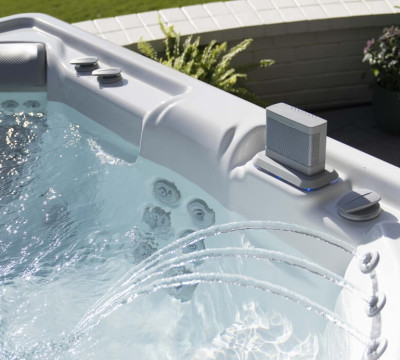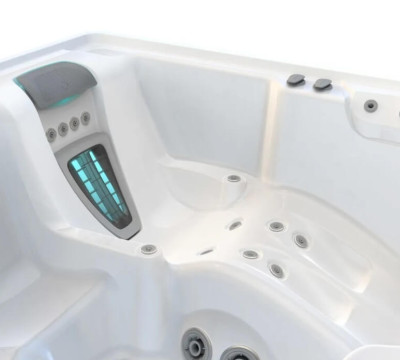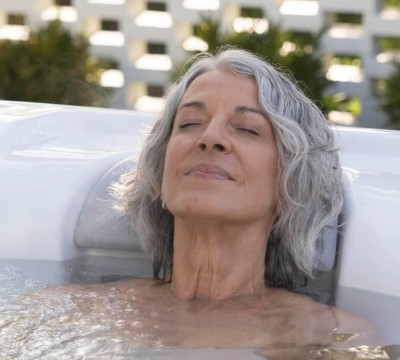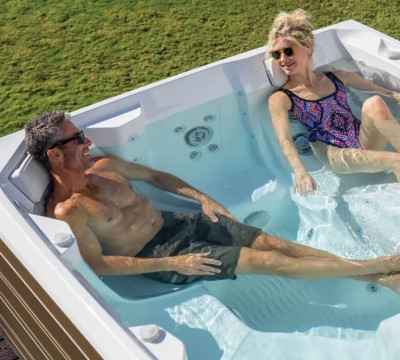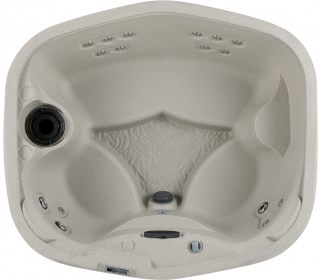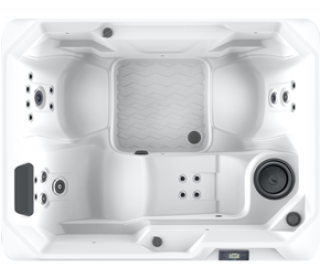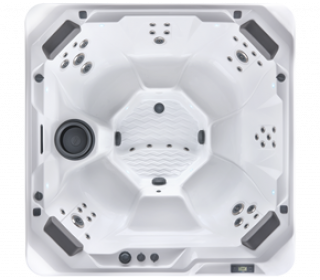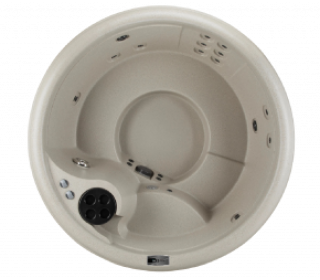Your hot tub's shell is tasked with holding the water inside your tub, and is a key determining factor in how well your spa retains heat. As a surface constantly exposed to water, chemicals and humans, it must be strong enough to withstand years of use as well as the occasional mishap. The best shells combine longevity, efficiency, beauty and functionality.
Hot tub shells come in a variety of materials, each possessing strengths and weaknesses. Learning more about what hot tub shells are made of can give you a better idea about which hot tub will be best suited to your needs.
Until the 1970s hot tub shells were primarily made of wood, but today only a few timber manufacturers remain. Most modern hot tub shells are made from vinyl, acrylic or rotomoulded plastic, while other materials like cement, stainless steel, fibreglass and inflatable PVC can also be used.
Vinyl hot tub shells
Some hot tubs are constructed through a process in which a vinyl liner is placed over a frame made from another material, such as cement – the same method frequently used in swimming pool construction. As such vinyl liner hot tubs are commonly found attached to inground pools.
While often inexpensive, particularly when part of a package deal with a swimming pool, these spas don't retain heat well. What you save on the sticker price may be eaten up by the cost of the electricity it takes to keep your hot tub warm. Vinyl isn’t particularly durable either; a vinyl hot tub shell is more likely to crack or tear than a shell made from other, stronger materials. Continuous exposure to sunlight will fade the colour of your vinyl hot tub liner, while an incorrect balance of chemicals in your hot tub can damage it.
Rotomoulded plastic hot tub shells
To create a rotomoulded hot tub you begin with plastic powder and a mould. The powder is inserted into the mould, heated until it melts, and then rotated until it covers the whole surface in a smooth and even layer.
Unlike the glossy surface of acrylic shells, rotomoulded plastic shells have a dull matte finish. Compared to acrylic shells, rotomoulded plastic shells are also relatively lightweight, due to the fact that the plastic is so efficiently and evenly distributed. This results in a lighter and more easily transportable hot tub, which may give you more options as to where it may be placed in your yard or on your deck.
The downside of rotomoulded hot tubs is in their relatively inefficient heat retention. As with portable hot tubs built with vinyl liners, the initial savings from their lower purchase price tend to be eroded over time, as owners of rotomoulded hot tubs pay more in electricity than owners of more energy-efficient spas.
Acrylic hot tub shells
An acrylic hot tub shell is made from a single sheet of acrylic. The sheet is heated until it begins to melt, then it’s placed over a mould. Vacuums suck away any air trapped between the mould and the acrylic, creating a smooth and perfectly formed shell. After the acrylic has cooled and hardened, it's reinforced with a combination of resin and fibreglass to further strengthen it.
Some acrylic shells are formed through a slightly different process: a layer of acrylonitrile butadiene styrene – also known as ABS – is applied to the sheet before moulding. The resulting hot tub shell is durable, beautiful and energy efficient. (Check out this video to see exactly how acrylic shells are formed.)
Owners of acrylic hot tubs can expect them to withstand normal wear and tear for many years without showing signs of damage. Acrylic hot tubs can be produced in a wealth of gorgeous colours and patterns, and when paired with high-quality insulation such as multi-density foam or FiberCor®, acrylic hot tubs retain heat incredibly well.
Acrylic hot tubs are heavier than rotomoulded hot tubs, making them more difficult to move, so they work best as a permanent installation in your backyard or on your deck. While acrylic tubs are more expensive than vinyl or rotomoulded plastic versions, their excellent temperature retention translates to lower energy needs than other hot tubs. Add in their durability, and these high-quality spas often end up cheaper in the long run!
While hot tub shells made of other materials have some advantages, acrylic shells are the choice of hot tub connoisseurs. If you value quality, performance and appearance, look no further.
Choosing the right shell is just one of the decisions you’ll need to make in order to find your perfect hot tub, which is why our experts are ready to help you understand how to make the right choice. For a better idea of which hot tub shell would be best for you, visit your local hot tub dealer, who can answer all your questions.



